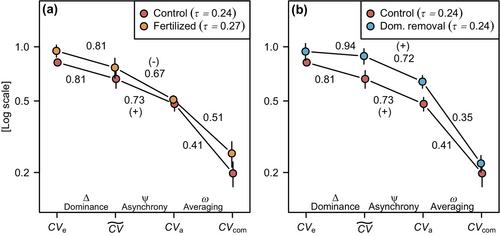Identifying the drivers of ecological stability is critical for ensuring the maintenance of ecosystem functioning and services, particularly in a changing world. Different ecological mechanisms by which biological communities stabilize ecosystem functions (i.e. “stabilizing effects”) have been proposed, yet with various theoretical expectations and debated conclusions. Here we propose a unified framework that aims at reconciling, and combining, different approaches to reliably test the strength of three stabilizing effects on the temporal constancy of ecosystem functions: the effects of (a) dominant species, (b) species asynchrony, and (c) diversity.
Compared to existing developments the approach allows, for the first time, disentangling these three stabilizing effects at the level of individual communities. So far this was not possible, and conclusions depended on indirect tests and comparative analyses across communities. We also propose a graphical representation of the relative contributions of the three stabilizing effects on a ternary plot, allowing us to easily compare communities sampled in various ecological contexts in a standardized space.
Our study answers the current need for a unified framework to link theoretical concepts on the temporal stability of ecological communities to data analysis. The present development promises flexible tests for a deeper understanding of the ecological stabilization of biodiversity and the relative importance of its components.



